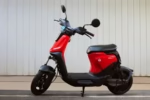We’ve all handled a five-dollar bill hundreds—maybe even thousands—of times. Whether it’s for a quick lunch, a tip for a delivery, or a few snacks at the gas station, the $5 bill is often treated like a simple, everyday tool. But what if that unassuming bill in your wallet could be hiding something extraordinary?
In 2024, a rare five-dollar bill with mismatched serial numbers sold for an astonishing $78,000 at auction. What’s even more surprising? This wasn’t discovered in a bank vault or a collector’s stash—it was found in circulation, passed from person to person like any other note.
This incredible story serves as a powerful reminder: sometimes, the most ordinary-looking items can hide a hidden treasure.
The Big Mistake That Made a Lot of Money
U.S. currency is printed under the tight control of the Bureau of Engraving and Printing (BEP), which ensures the highest precision in production. Mistakes are extremely rare, but occasionally, something slips through the cracks.
Every U.S. bill features two serial numbers—one on the left and one on the right. These numbers serve as unique identifiers for each bill and help track its lifespan and authenticity. When these serial numbers don’t match, it’s a printing error that instantly turns the note into a rare and highly collectible item.
The bill that sold for $78,000 had a minor but significant mismatch: the left-side serial number read JG04211825A, while the right-side number was JG04211925A. Just one digit separated these numbers, turning an ordinary note into a sought-after collectible.
Authenticated and graded by PCGS Banknote, this rare bill was auctioned for an incredible price, illustrating how a tiny error can lead to big profits.
How Do Mismatched Serial Number Errors Occur?
Mismatched serial numbers are rare but not impossible. The BEP prints bills in several stages, and the serial numbers are added at the final stage using separate numbering heads. If there’s a malfunction or misalignment—whether from mechanical issues or operator error—it can result in mismatched numbers.
While most errors are detected and destroyed during production, a few manage to escape the scrutiny and enter circulation. These “lucky finds” are like winning lottery tickets for those who spot them.
How to Spot a Mismatched Serial Number Bill
Wondering if you’ve got a rare note on your hands? Here’s how to identify a mismatched serial number bill:
Step 1: Compare Both Serial Numbers
Check the green serial numbers located on the left and right sides of the front of the bill. If even one digit differs, you may have found an error note.
Step 2: Look for Other Clues
In addition to the serial numbers, examine the series year in the lower right corner—many error notes have come from Series 2013, 2017A, and newer years. Also, check for other signs of misprints, such as misaligned seals, smudged ink, or missing elements.
Step 3: Condition Matters
The better the condition of the bill (no folds, creases, or heavy wear), the more valuable it will be. A crisp, uncirculated note can be worth many times more than a well-worn one.
What Should You Do if You Find a Note with Mismatched Serial Numbers?
If you suspect you’ve found a rare note, here’s what to do next:
- Don’t spend it! As tempting as it might be, hold onto the note. It could be worth a lot more than its face value.
- Handle it carefully. Use gloves or other protective gear to avoid causing further wear and tear.
- Get it authenticated. Submit the note to a professional grading service like PCGS Banknote or PMG to verify its authenticity and assess its value.
- Consult experts. Share clear photos of the note with currency collectors’ forums or currency dealers for expert opinions.
- Consider auctioning it. Auction houses like Heritage Auctions specialize in rare currency and can connect you with serious buyers.
In today’s digital world, it’s easy to overlook cash as just a means of transaction, but stories like the $5 bill that sold for $78,000 remind us that value can still be found in the most unlikely places.
The next time you pull a note out of your wallet, take a moment to look it over. You might just be holding a printing mistake—and a potential life-changing opportunity.
That little $5 bill could be your ticket to something much, much bigger.
FAQs
Are all mismatched serial number bills worth money?
Not necessarily. The value depends on factors like rarity, condition, and denomination. A subtle mismatch on a heavily circulated bill might not be worth much, while a crisp, clearly mismatched note could fetch a high price.
How rare are mismatched serial number errors?
They are extremely rare. Out of the billions of notes printed each year, only a small handful make it through with this kind of error.
Can mismatched serial numbers occur on any denomination?
Yes. Mismatched serial numbers have been found on $1, $5, $10, $20, and even higher denominations. Higher denomination error notes tend to fetch more at auction due to their scarcity.
How can I be sure my note is real?
The best way to confirm your note’s authenticity is to have it graded by a trusted service like PCGS or PMG. They will verify its legitimacy and assign a condition grade, which heavily influences its value.
Where can I sell a rare error bill?
You can sell it through currency auction houses, online marketplaces like eBay (with caution), or by working directly with currency dealers.




